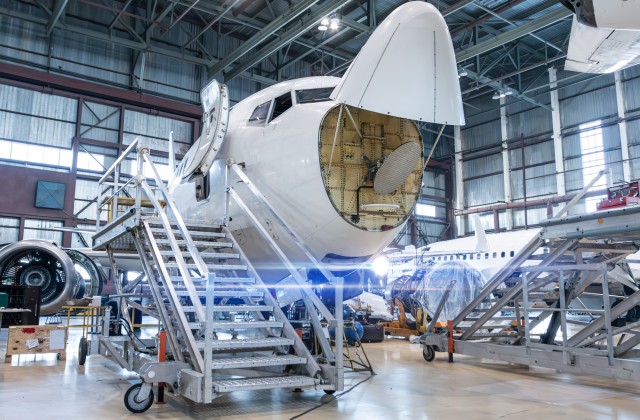Say you’ve embarked on a road trip to discover a new hot spot or even that you’re driving the most familiar of routes, like your daily commute to the office. You’ll likely use a live maps app like Waze – which allows drivers to share and pool data about traffic patterns, weather, tolls, local currency, highway patrol reports and local events – to make sure you get from point A to point B in the most efficient way possible. Whether you’re detouring around an accident, switching routes when you can see there’s traffic up ahead, avoiding toll roads or changing your departure time until after a local 5k concludes, this kind of technology is ingrained in our personal decision-making, and we rely on it every single day. Our needs (demands) change based on shared knowledge of our environments, and leveraging that synchronized data allows us to save time and money along the way.

Now, let’s apply that lens to an enterprise-level global supply chain, where we know that there will most certainly be volatility and interruptions due to natural disasters, inclement weather, changing political climates and unforeseen events that are sure to result in sudden changes to demand. Plus, while navigating through the disruptions you can’t control, there will be givens like border crossings and the complexity of multi-currency supply chain journeys. Imagine you’re crossing the US-Canada border on your road trip: in an instant, you’ll need to adjust your speed from miles per hour to kilometers per hour. Demand planning enabled with multi-currency functionality does the same thing for your inventory and supply chain costs, seamlessly switching between USD and CAD.
How navigation apps are like integrated supply chain planning
In the same way that navigation apps give you the choice to take the fastest, shortest or cheapest route from point A to point B, integrated supply chain planning solutions do the same for routing inventory as demand drivers fluctuate. They recommend alternate pathways and plans to keep your business as low-risk and profitable as possible.
By pooling promotions, sales forecasts, changes to customer orders and patterns based on historical data into demand planning applications — and then connecting that data across all of your supply chain functions — concurrent demand planning solutions provide a complete, end-to-end perspective (and the ability to collaborate quickly) for the power to better manage what you can’t control. How? By eliminating data siloes across the supply chain — thereby eliminating data latencies, duplications and missed correlations — concurrent demand planning software transmits any change in demand throughout the entire network. Its effects are seen across the supply chain in near real-time.
Because all parties have insight into the litany of variables across the supply chain, when something goes wrong (because it always does), your global network of sales and marketing teams, partners, suppliers, manufacturers, distribution centers and third party logistics providers can make decisions in unison: sooner, more sustainably and faster. That means less waste, lower risk, and reductions in spending and carbon footprint associated with both forward and reverse logistics. That's because the right amount of inventory is in the right place at the right time to more precisely meet demand, even when conditions unexpectedly change.
Using technology to drive you forward
So how does it work? Machine learning, a subset of artificial intelligence, compiles contextual data from a variety of sources like social media feeds, economic indicators and weather patterns to identify what factors are likely to impact demand. That dynamic data stream is built into your forecasting models, which in turn are tailored and tuned to the realities in which your unique business operates. That means greater forecast accuracy.
That said, these solutions aren’t built to “set it and forget it.” While the supercomputing power of machine learning enables faster decision-making, modern demand planning requires collaboration between man and machine, where humans focus the algorithms on what matters most to their business objectives and the technology alerts them when something is amiss. While some automation is crucial to speeding up response time, the human element of cross-supply chain collaboration is essential for profitably balancing supply and demand.
A new way to think about demand planning
A simple way to think about modern demand planning is this: Simply using historical, siloed data to forecast and predict demand (the old way), is like knowing that it’s winter and assuming you’ll need to wear a coat and drive your usual route when you leave the house each morning. You will get to your destination, but you won’t know which streets have been snow plowed or whether there’s an accident on your route.
In contrast, modern demand planning powered by machine learning and statistical forecasting would provide a holistic analysis of every variable along the way. In addition to grabbing your coat, it would tell you to take your umbrella with you, to forego your usual gas stop and head to the Main St. location (where the prices have dropped overnight) and recommend that you take the backroads to work because there’ll be construction on your regular route.
In the same way your morning commute is optimized with end-to-end visibility, data-driven demand planning empowers organizations to balance market needs against supply chain volatility, capabilities and risk. And that synchronization means reduced planning cycle times and vastly improved forecast accuracy.
Sure, with or without your trusty app, you (or your inventory) will reach the destination either way. But in the scenario where you rely on a vast pool of data to inform your decision-making, you’ll arrive faster, drier and a little richer than everyone else. Think about that the next time your demand planning solution leaves you, your customers and your profits caught in the rain.





